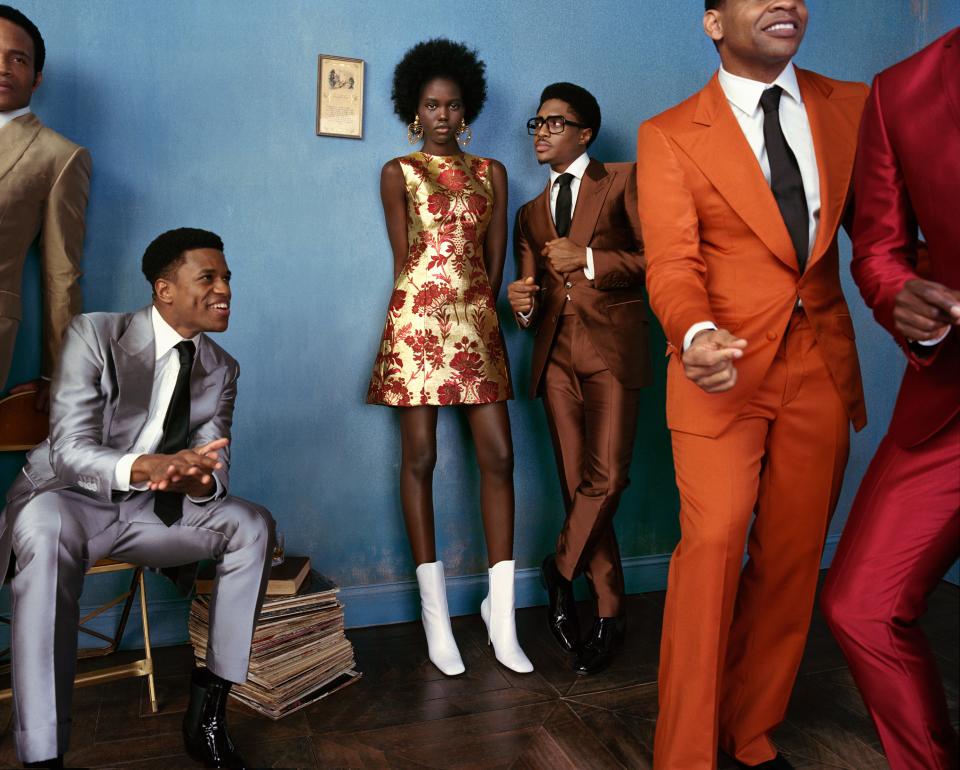The Sound of the Temptations Hits Broadway
The Temptations sang wherever they went. In the kitchen, on the road, or walking down the street, the group lived in song—the result of a steady diet of Sunday services, which schooled each man in the delights of vocal harmony. Onstage, that impulsive musicality—matched to sharp suits and finely calibrated dance moves—changed the sonic landscape of America. At a time when the national pop charts remained determinedly white, they became crusaders of soul.
This spring, their exuberant sound will fill a Broadway stage as Ain’t Too Proud—The Life and Times of the Temptations arrives in New York. After a rapturously received tour, the musical, from director Des McAnuff (Jersey Boys; Summer: The Donna Summer Musical) and playwright Dominique Morisseau (Detroit ’67; Pipeline), opened this month at the Imperial Theatre. At its center are the so-called Classic Five members—Otis Williams (played by Derrick Baskin), Melvin Franklin (Jawan M. Jackson), Eddie Kendricks (Jeremy Pope), Paul Williams (James Harkness), and David Ruffin (Ephraim Sykes)—the men who established the group’s tailored look and honeyed sound. “The Temptations were the first really popular group known not just for singing but for their visual presentation,” McAnuff says. “That gave us something really rich to work with.”

From their beginnings in Detroit, Ain’t Too Proud follows the quintet’s winding path to international superstardom, capturing the Temptations’ élan while steering clear of mimicry. “We’re not creating exactly what they did, because I don’t think it would translate,” choreographer Sergio Trujillo says. “I don’t know that the original Temptations could do the things that I’m having the actors do”: all manner of splits, flips, slides, and twists. Jackson, not a dancer by training, believes it. “The acrobatics?” he says. “They’re crazy.”
A Detroit native, Morisseau, 40, has spent most of her life steeped in the band’s story. “Detroiters of my generation all grew up on the Temptations,” she says. “That was the music of our city.” Motown was, she says, “used to help integrate this nation.” In 1968, the Temptations became one of the first black acts to land a network television special, which they shared with the Supremes. But they were still just five guys in their 20s. “The show is a great celebration of the Temptations’ music and their story, but it was certainly a bumpy road,” McAnuff says.
Onstage and on album covers, the Temptations’ shared wardrobe only added to their appeal. The stage-friendly getups—reflected here in suits of crisp black and shimmery jewel tones—were costumes but also a kind of uniform, flawless ensembles designed to make an impression as the group sang their way not only down the streets but also through the discord of the civil rights movement. “It’s a hard show,” Baskin says, “physically but also emotionally and spiritually.” To get through it, the cast look to one another—a network of singularly strong performers who are even more commanding when working in harmony.
In this story:
Fashion Editor: Gabriella Karefa-Johnson.
Hair: Lacy Redway; Makeup: Emi Kaneko.
Set Design: Bette Adams for Mary Howard Studio. Produced by Izzy Cohan.

